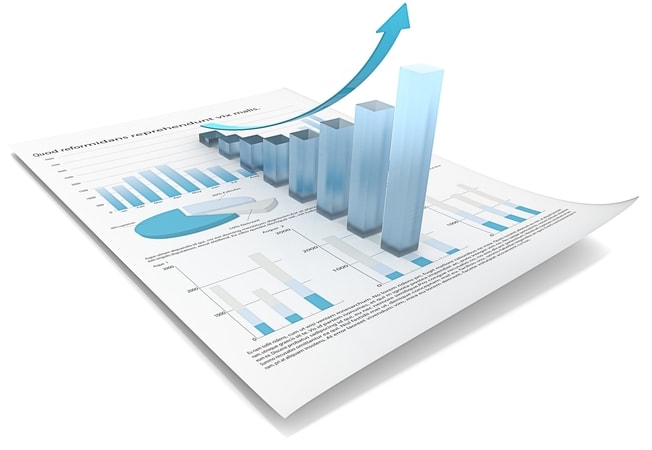Factors Our Statisticians Consider When Conducting a t-Test
Students and researchers may require help to conduct a t-test statistic on their data sets because of unavoidable circumstances, especially in statistics and econometrics studies. The t-test is a statistical test used to determine whether a significant difference exists between two groups' means. It is used as a hypothesis testing tool that takes into account the t-statistic, t-distribution values, and the degrees of freedom when determining the statistical significance.
The statistical test statistic can be used when testing a hypothesis to ascertain whether a treatment/intervention/process has a significant effect on the population parameter of interest or to compare averages in real-life situations where researchers can find out the generalizability of results to an entire population.

The t-test is a type of inferential statistics that is used in performing hypothesis tests. We consider the fundamental data values that are required in calculating the t-test statistic such as the mean difference between two groups of interest, standard deviation, and the number of data values for each group. The t-test statistic calculation done by experts from our company is founded on careful consideration of the factors discussed in this article.
Conducting a T-test Statistic
Basically, a t-test allows one to make a comparison between the average values of two data sets of interest and find out whether they are drawn from the same population. If a comparison between more than two groups is to be made, other options of statistical tests such as the analysis of variance (ANOVA) can be used. T-tests draw a simple random sample from each of the two sets being analyzed and assume a null hypothesis that the means are similar.
After the application of suitable t-tests formulae, the null hypothesis can be rejected or accepted. Those who hire a statistician for a t-test statistic from our company receive the best help founded on a consideration of the following factors.
1. Type of t-test required for the sample data
There are different types of t-tests from which we choose depending on the data set and the type of statistical analysis required. The t-tests are classified as either dependent or independent samples t-tests. They include:
- The independent samples t-test, also known as a two-sample t-test, used to compare the means of two groups or two independent samples.
- Paired t-test, which is also referred to as the correlated paired t-test, paired-samples t-test, or the dependent samples t-test is useful in comparing means drawn from the same group at different times. The paired t-tests are, therefore, conducted on dependent samples.
- One sample t-test is used in comparing a single group's mean against a pre-determined mean or a standard value.
Depending on if one wants to determine whether a significant difference exists between two populations or is interested in knowing if one population mean is greater than or less than the other, they can perform a two-tailed t-test or the one-tailed t-test respectively. The two-tailed test helps to determine whether two populations differ from each other while the one-tailed test compares one population's mean to that of another.
When offering help to conduct a t-test, we must determine the type of t-test that best suits the data set being analyzed. The choice is influenced by factors such as whether the groups being compared are drawn from a single population or two different populations and the direction towards which we are supposed to test the significant differences. A perfect consideration of these factors and the selection of the right t-test is among the assurances we give to clients who purchase the services of a statistician for a t-test statistic from our company.
2. Statistical significance
The calculated t-value of the test statistic tells how significant the differences between the groups being compared are. In a hypothesis test, the value of the t-test tells whether there exists a true difference between the groups or the result occurred by chance.
Every t-value has an associated p-value, representing the probability of the differences between the groups occurring by chance. The p-values range from 0% to 100% and are mostly expressed in decimals. The t-value, degrees of freedom and the p-values in study results tell the audience whether the observed differences between the two groups being compared are statistically significant or by chance.
3. Compliance with the basic assumptions
The t-test is a parametric test that operates under various assumptions and requirements parametric tests. The test statistic must conform to the basic assumptions during hypotheses tests. The assumptions include:
- The scale of measurements used on the collected data adheres to a continuous or ordinal scale.
- The data is a simple random sample selected from the total population of interest.
- Plotting the data results in a bell-shaped or normal distribution curve.
- There is a homogeneity of variance when the standard deviations of the samples are approximated to be equal.
When tasked with calculating t-test statistics, we must evaluate the data to determine whether it strictly complies with all the assumptions pertaining to the scale of measurement, normal distributions, adequacy of sample size, equal variances in standard deviation, and random sampling. If the data are not compliant with the assumptions, we advise the client to consider using other nonparametric tests such as the Wilcoxon Signed-Rank test for sets of unequal variances.
4. Formats of t-distribution tables
The formats for t-distribution tables include the one-tailed and two-tailed tests. The t-distribution implies any continuous probability distribution resulting from the estimation of the mean in a normally distributed population by the use of an unknown standard deviation and a small sample size.
The one-tail t-distribution table is useful in the assessment of cases with a fixed value /range and clarity of direction, either towards the positive or negative side. The two-tail t-distribution table is used when performing range-bound analysis. In our help to conduct a t-test statistic for a specific data set, we select the most suitable format for the t-distribution table depending on the type of analysis required.
5. Outputs of the t-test
The t-test produces two types of outputs; the t-values, and the degrees of freedom. A t-value denotes the ratio of the difference between the means of two sample sets and the variation existing between them. If the t-value/t-score is high, it is an indication that a large difference exists between the two sample sets being compared whereas smaller t-value shows there are similarities between them. We assure clients of the correct interpretation of the t-test outputs where a larger t-value indicates the presence of significant differences between the groups and a smaller one is a sign that the groups being compared are similar.
The degrees of freedom are essential in the assessment of the validity and importance of the null hypothesis. The degrees of freedom are related to the study sample sizes and indicate the number of free data points available when making comparisons. They represent the values in a study that have the freedom of varying and their computation depends on the number of data records in a sample. We have a track record of assisting scholars and researchers in testing the null hypothesis against the alternative hypothesis using the student's t-test. We are therefore the ideal choice for anyone wishing to purchase the services of a statistician for a t-test statistic.

6. Presentation of the t-test results
The t-test can be performed manually using a suitable formula or digitally with the help of statistical software. Those who hire a statistician for a t-test from our company receive accurate results that correctly differentiate a true difference from an occurrence by chance. Our experts possess the experience and prowess in both the manual calculation of the t-test and the use of statistical software such as the R, Minitab, and the SPSS.
There are basic elements that we include when reporting the t-test results. These include the p-value, the t-value, and the degrees of freedom for the test statistic. It is from the three elements that we communicate to the audience whether the results of the test are statistically significant or not. The report can also include other summary statistics for the groups such as the mean and standard deviation.
The t-test calculation done by experts in our team is comprehensive and includes the interpretation and presentation of the results in a manner that is easy to understand for the target audiences and other readers who may not be experts in the specific field.
Carefully considering these factors form some of the fundamental attributes that make us the best in helping scholars and researchers test hypotheses in their respective subjects by offering excellent help to conduct t-test statistics. Our services are delivered by qualified specialists in all the subjects; ensuring that each assignment is matched with an expert in that specific field.
We are available and accessible 24/7, hence, clients can contact us at any time they may wish to. We offer high-quality services at affordable prices with unlimited free revisions and a money-back guarantee in case of dissatisfaction. Anyone wondering where to purchase the services of a statistician for a t-test can contact us for free consultation and inquiries.





